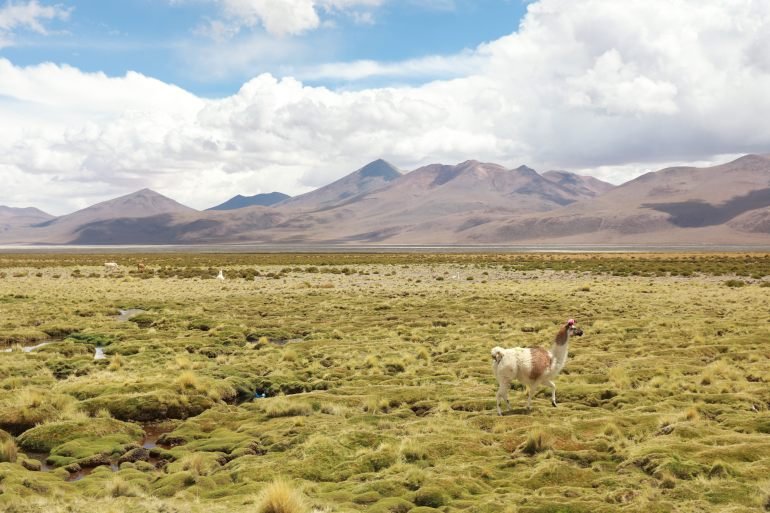Threatening water resources
Almost immediately, it seemed, the first industrial lithium processing plant had been inaugurated nearby by Bolivian Lithium Deposits (YLB) in December last year. YLB is Bolivia’s state-owned mining company founded in 2017 and responsible for the industrialisation of lithium in the country, a process that is still very much in its early stages of development.
The standard method of extracting lithium involves pumping brine into ponds on the salt flats and processing the lithium salts which crystallise once the water has evaporated. The process requires vast amounts of water.
Furthermore, the chemicals required to process lithium are toxic. “The release of such chemicals through leeching, spills or air emissions can harm communities, ecosystems and food production,” a recent report from the international environment activism group, Friends of the Earth, states. “Moreover, lithium extraction inevitably harms the soil and also causes air contamination.”

Bolivia has secured deals with Chinese consortium CBC and Russian group Uranium One to use a new method – direct lithium extraction (DLE) technology – in the Uyuni salt flat and the Laguna Pastos Grandes, a crater lake in the same Altiplano plateau area as the Uyuni flat and where lithium has also been found. This new method, YLB says, will use less water, but has yet to be implemented.
The locals are hesitant to be drawn in by such assurances, however. In November 2023, members of Villa Mar, a town in the Bolivian Andes close to the border with Chile, staged a protest when Uranium One Group arrived to deposit machinery and containers at the Laguna Pastos Grandes.
Back in Calcha K, like most others in the area, the Calcina family has been raising llamas and growing quinoa real, considered the gold standard of this variety of grain, for generations. Its seeds are larger, more expensive and considered a fashionable “super food” by many in the Global North.
“I have been working in this field since I was a child,” says Calcina, who owns six hectares of land, roughly the same size as 14 football fields, and is a member of the cooperative of quinoa real producers. “My parents and grandparents sowed this land before me; my children moved away but they come back in the summer to help with the harvest.” Her husband also works on the farm and takes care of the llamas.

Already concerned about the effects of climate change, the prospect of incoming industrialisation is adding to her woes.
“We are seeing less rain, and changes in the weather,” she says. “We are worried about the climate crisis but also the water usage of lithium extraction. My husband is scared because he heard that they are having problems in Chile and we do not know if we are going to have enough water for the quinoa and the llamas.”
Last year, her cousin, Mercedes Calcina, 60, who lives in the neighbouring village of Santiago de Chuvica and is also a member of the quinoa farmers’ cooperative, lost her entire harvest. Mercedes says: “There was no harvest of quinoa in my field last year because of the droughts. The rains are already changing due to climate change, now we are worried for lithium extraction.”

